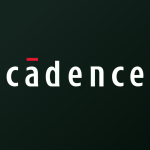Company Description
Overview
Cadence Design Systems Inc (CDNS) is a prominent provider of electronic design automation (EDA) software, semiconductor intellectual property (IP), and system design and analysis solutions. Leveraging EDA and semiconductor design expertise, the company empowers engineers to efficiently design, simulate, and verify complex integrated circuits and system-on-chips (SoCs). Combining advanced simulation tools with an expansive portfolio of design IP, Cadence facilitates the development of reliable and high-performance electronic components that power a wide array of devices across multiple sectors.
Comprehensive Product Portfolio and Core Business Areas
At its core, Cadence offers an integrated suite of tools that span from the transistor level to full board and subsystem design. The company’s offerings include:
- Custom/Analog and Digital Design Tools: These software solutions are essential for designing transistors, standard cells, and IP blocks, ultimately building the chips that drive modern electronics.
- Digital Automation and Verification: Advanced digital tools that streamline the design and verification of complex, giga-scale digital systems at the latest semiconductor nodes.
- IC Packaging and PCB Tools: Comprehensive design suites that allow for the simulation and optimization of complete boards and integrated subsystems.
- Design and Verification IP: A diverse and growing portfolio that includes memory IP, protocol interfaces, analog/mixed-signal components, and specialized processors, which are essential in reducing design time and improving product reliability.
- Hardware/Software Co-Development Platforms: Integrated systems that allow for hardware and software to be developed concurrently, ensuring seamless integration and enhanced functionality in complex electronic systems.
Industry Position and Market Significance
Cadence operates within a crucial segment of the semiconductor industry where complexity is continuously increasing, making manual design and verification processes impractical. The convergence of semiconductor and system design processes presents both challenges and opportunities. By offering automated EDA tools that enhance design accuracy and productivity, Cadence not only addresses the immediate needs of semiconductor manufacturers but also positions itself as a key enabler of innovation across numerous sectors, including consumer electronics, automotive, communications, and industrial applications.
Revenue Model and Operational Dynamics
Cadence generates revenue predominantly through licensing of its advanced software tools, subscriptions to its services, and sales of semiconductor IP. This model supports ongoing research and development, ensuring that its product suite evolves with the ever-changing demands of the semiconductor market. Its high level of integration across various aspects of the design flow helps mitigate the challenges posed by increasing design complexity, providing a competitive advantage over other EDA vendors.
Competitive Landscape and Differentiation
The competitive landscape in electronic design automation is rigorous, with several established players contending for market share. Cadence differentiates itself through its comprehensive portfolio, strategic integration of hardware/software co-development platforms, and deep industry expertise. The company continuously refines its product offerings to address both current design challenges and emerging technological paradigms, such as the mutual convergence of semiconductor companies transitioning toward system-level capabilities and systems companies embracing in-house semiconductor design. This dual approach enables Cadence to capture a broad spectrum of market needs.
Technological Expertise and Innovation
Embodying the principles of advanced engineering and innovation, Cadence’s solutions are built on robust algorithms and intricate simulation frameworks that ensure high fidelity in design and verification processes. Its technology is pivotal in optimizing signal integrity, power consumption, and overall chip performance, thereby enabling the design of high-speed, reliable circuits essential for modern electronic devices. The company’s expertise in digital, analog, and mixed-signal processing underscores its capacity to handle fast-evolving technology trends while maintaining a reputation for precision and reliability.
Applications and Use Cases
Cadence’s tools and platforms are applied in a multitude of areas including:
- Semiconductor Design: From individual transistor modeling to system-level integration across SoCs, addressing the rigorous demands of modern chip design.
- Consumer Electronics: Facilitating the development of smartphones, wearable devices, and other high-performance consumer gadgets.
- Automotive and Industrial Systems: Engineering solutions that meet the high-reliability and safety standards required in automotive electronics and complex industrial applications.
- Communication Networks: Enhancement of high-speed data processing capabilities through innovative digital design and verification tools.
Customer and Industry Impact
Engineers and designers across the industry rely on Cadence’s robust toolset to address one of the most resource-intensive areas of modern electronics: chip design and verification. By automating many of the intricate steps required for chip development, Cadence enables a reduction in time-to-market and resource expenditure, while simultaneously increasing design reliability and performance. This operational efficiency is crucial for industries facing rapidly evolving technology standards and intense competition.
Commitment to Quality and Professional Integrity
Cadence is renowned for its commitment to quality, providing reliable, real-world design tools that have been refined over years of rigorous industrial application. Its products are the result of sustained investment in research and development and a comprehensive understanding of the semiconductor design cycle. This commitment enhances customer confidence and cements Cadence’s reputation as a dependable partner in the high-stakes, high-complexity world of electronic design automation.
Conclusion
In summary, Cadence Design Systems Inc offers a comprehensive suite of EDA tools and semiconductor IP solutions that are indispensable for modern chip design. Its multifaceted product portfolio, built on years of innovation and industry insight, supports the entire lifecycle of chip and system development. Whether through automating digital verification or providing custom analog design tools, Cadence plays an instrumental role in enabling engineers worldwide to create advanced electronic systems that drive today's connected world.
By positioning its tools at the core of semiconductor design workflows, Cadence not only contributes to the advancement of technology but also consistently ensures that the complexity of modern design challenges is met with cutting-edge solutions informed by deep industry expertise.

